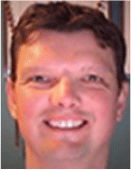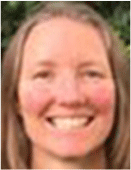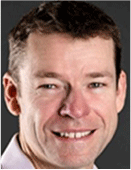Geological and Bioregional Assessments: assessing direct and indirect impacts using causal networks
Luk J. M. Peeters A , Kate Holland A and Cameron R. Huddlestone-Holmes BA CSIRO, Glen Osmond, Australia.
B CSIRO, Kenmore, Australia.
C Corresponding author. Email: luk.peeters@csiro.au
The APPEA Journal 61(2) 485-490 https://doi.org/10.1071/AJ20037
Accepted: 17 March 2021 Published: 2 July 2021
Abstract
The Geological and Bioregional Assessment (GBA) Program assesses the potential impacts of shale, tight and deep coal gas development on water and the environment. The cause-and-effect relationships that allow unconventional gas resource development activities to lead to an impact on environmental values are often interrelated, leading to both direct and indirect impacts. The GBA Program developed an impact assessment methodology based on causal networks that explicitly map out these cause-and-effect relationships, including all direct and indirect impacts. This network approach is coupled with a spatially explicit, systematic evaluation of the likelihood, consequence, control and mitigation strategy for each cause-and-effect relationship. Combining these evaluations based on the network structures identifies which activities could lead to potential impacts. The assessment identifies where more detailed local-scale assessments, management and monitoring should focus, as well as where impacts are unlikely to occur.
Keywords: GBA region, regulatory efficiency, user panel, approval processes, sustainable development, Cooper Basin, Isa Superbasin, Beetaloo Sub-basin, shale gas, tight gas, deep coal gas, baseline, unconventional gas development, geology, hydrogeology, prospectivity, chemical screening, protected matters, hydraulic fracturing, well integrity, Matters of National Environmental Significance, Matters of State Environmental Significance, causal network, causal pathway, hazard analysis, impact analysis, potential impact, gas resources, water resources.

Dr Luk Peeters is a senior research scientist with CSIRO Land and Water with over 10 years of experience in uncertainty analysis of numerical models and risk assessment. He obtained a master in geology and a PhD in hydrogeology from the Katholieke Universiteit Leuven (Belgium) and joined CSIRO in 2010. Dr Peeters is a member of IAH. |

Dr Kate Holland is a principal research scientist with CSIRO Land and Water with over 20 years of experience using multi-disciplinary investigations to support policy makers, industry and regulators. She obtained a PhD in earth sciences from the Flinders University of South Australia in 2003 and joined CSIRO in 2004. |

Dr Cameron Huddlestone-Holmes is a principal research scientist in CSIRO Energy. He works on environmental, geological and geotechnical problems in the earth resources industry, primarily in the unconventional gas, coal and geothermal sectors. His specialty is in integrating multi-disciplinary capabilities in geoscience and resource engineering and applying them to solving problems in industry. The majority of Cameron’s current work is on social and environmental topics related to the onshore gas industry. Dr Huddlestone-Holmes has a PhD in Geology and has worked for 20 years in industry and research, the last 12 years of which have been with the CSIRO. He is a member of the Society of Petroleum Engineers and the Petroleum Exploration Society of Australia. |
References
Chen, S. H., and Pollino, C. A. (2012). Good practice in Bayesian network modelling. Environmental Modelling and Software 37, 134–145.| Good practice in Bayesian network modelling.Crossref | GoogleScholarGoogle Scholar |
Commonwealth of Australia. (2015). Modelling water-related ecological responses to coal seam gas extraction and coal mining. Prepared by Auricht Projects and the Commonwealth Scientific and Industrial Research Organisation (CSIRO) for the Department of the Environment, Commonwealth of Australia, Canberra.
Gelman, A., and Hennig, C. (2017). Beyond subjective and objective in statistics. Journal of the Royal Statistical Society. Series A: Statistics in Society 180, 967–1033.
| Beyond subjective and objective in statistics.Crossref | GoogleScholarGoogle Scholar |
Hagberg, A. A., Schult, D. A., and Swart, P. J. (2008). Exploring network structure, dynamics, and function using Networkx. In ‘7th Python in Science Conference (SciPy 2008)(SciPy)’. pp. 11–15.
Holland, K. L., Brandon, C., Crosbie, R. S., Davies, P., Evans, T., Golding, L., Gonzalez, D., Gunning, M. E., Hall, L. S., Henderson, B., Kasperczyk, D., Kear, J., Kirby, J., Lech, M. E., Macfarlane, C., Martinez, J., Marvanek, S., Merrin, L. E., O’Grady, A., Owens, R., Pavey, C., Post, D., Rachakonda, P., Raiber, M., Sander, R., Stewart, S., Sundaram, B., Tetreault-Campbell, S., Williams, M., Zhang, Y., and Zheng, H. (2020). Geological and environmental baseline assessment for the Cooper GBA region. Geological and Bioregional Assessment Program: Stage 2. Department of the Environment and Energy, Bureau of Meteorology, CSIRO, Geoscience Australia, Australia.
Huddlestone-Holmes, C. R., Frery, E., Wilkes, P., Bailey, A. H. E., Bernadel, G., Brandon, C., Buchanan, S., Cook, S. B., Crosbie, R. S., Evans, T., Golding, L., Gonzalez Dda, Gunning, M. E., Hall, L. S., Henderson, B., Herr, A., Holland, K., Jarrett, A., Kear, J., Kirby, J., Lech, M., Lewis, S., Macfarlane, C., Martinez, J., Northover, S., Murray, J., O’Grady, A., Orr, M. L., Owens, R., Pavey, C., Post, D., Sundaram, B., Rachakonda, P., Raiber, M., Ransley, T., Tetrault-Campbell, S., and Wang, L. (2020). Geological and environmental baseline assessment for the Beetaloo GBA region. Geological and Bioregional Assessment Program: Stage 2. Department of the Environment and Energy, Bureau of Meteorology, CSIRO and Geoscience Australia, Australia.
Huddlestone-Holmes, C. R., Holland, K. L., and Peeters, L. (2021). Geological and Bioregional Assessments: a tale of two basins. The APPEA Journal 61, 491–494.
| Geological and Bioregional Assessments: a tale of two basins.Crossref | GoogleScholarGoogle Scholar |
International Electrotechnical Commission. (2019). ‘IEC 31010 Risk Management – Risk Assessment Techniques’, 2 edn.
Kynn, M. (2008). The ‘heuristics and biases’ bias in expert elicitation. Journal of the Royal Statistical Society: Series A (Statistics in Society) 171, 239–264.
Peeters, L. J. M. (2017). Assumption hunting in groundwater modeling: find assumptions before they find you. Groundwater 55, 665–669.
| Assumption hunting in groundwater modeling: find assumptions before they find you.Crossref | GoogleScholarGoogle Scholar |
Perdicoulis, A., and Glasson, J. (2012). How clearly is causality communicated in environmental impact assessments? Journal of Environmental Assessment Policy and Management 14, 1250020.
| How clearly is causality communicated in environmental impact assessments?Crossref | GoogleScholarGoogle Scholar |
Stacey, A., Bouma, M., Turner, E., and Baskys, M. (2021). Geological and Bioregional Assessments: a program to encourage industry development and improve regulatory efficiency while maintaining the highest possible environmental standards. The APPEA Journal 61, 471–476.
| Geological and Bioregional Assessments: a program to encourage industry development and improve regulatory efficiency while maintaining the highest possible environmental standards.Crossref | GoogleScholarGoogle Scholar |
Standards Australia. (2018). ‘As ISO 31000:2018 Risk Management – Guidelines’.


